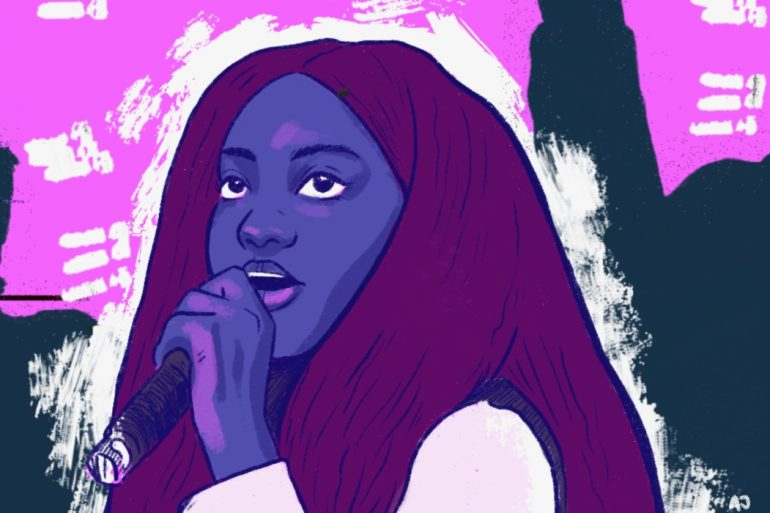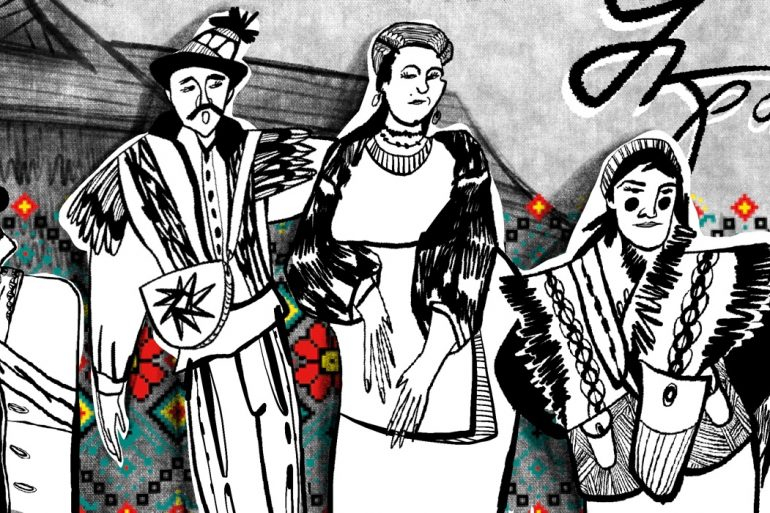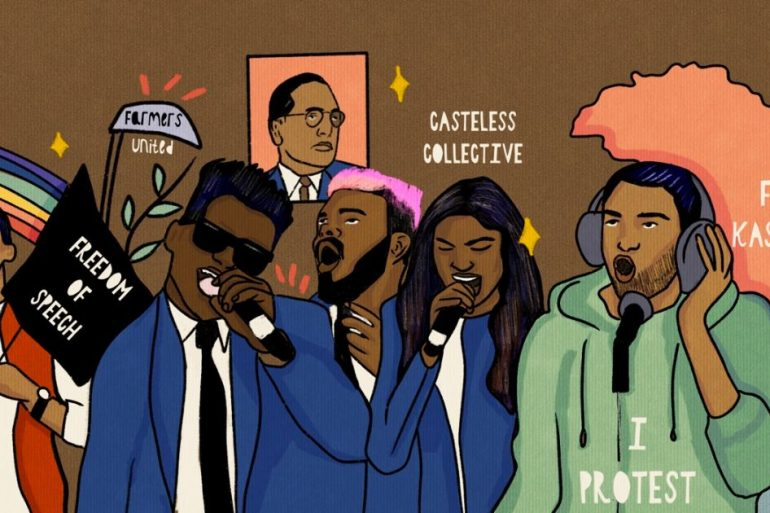In secondary school, my classmate, Faith Moyosore Agboola, was a phenomenal storyteller. She would hand-write pages and pages of thrilling stories that we would all pass around, and hope and pray she had written the next chapter by the following week. Faith has consistently impressed me since those days, when her passion and talent for writing stood out even then. Her stories exhibited a depth and emotion comparable to seasoned authors like Danielle Steele and Nora Roberts – I have no idea what business we had reading these books at 12 and 13 years old, but we did.
Unsurprisingly, the talented young girl I knew has evolved into a remarkable woman. She is a Chevening Scholar, the 2024 British Council Culture and Creativity Award Winner, and she has continued to produce beautiful writing. Now, many years later, Faith has released a captivating six-track poetry EP, Blue Hour Notes. Like my secondary self, I could not wait to listen to it and see how much her writing had grown with her.
In the EP, Faith narrates experiences of love, heartbreak, depression, mental health, migration and colourism. And while some of these experiences are personal to her, they also reflect the stories of people around her. When we finally get the chance to speak for this article, Faith, currently recovering from a cold, says through her hoarse voice, “When I write, I mix my personal experiences with other people’s experiences, so it’s not 100% Faith.”
Before the EP’s release, Faith and I discussed her reservations and apprehension about its reception. She had postponed the release multiple times, expressing concerns about the weightiness and sad themes of the EP.
“I felt like the album was very heavy,” she tells me. “I wasn’t sure how people would receive six poems about such heavy themes. It felt like I was exposing myself; I felt exposed.” She continues, “I was scared that once people listened to it, they’d be like, So, this is your life?”
Reflecting on Faith’s words reveals that the vulnerability and heavy themes in her work clearly give her a sense of apprehension. She questions how the personal narratives will be perceived, emphasising that it’s not even necessarily about the quality of the work but rather about what it conveys about her and the potential judgments it may elicit from the listeners.
Experiencing shame
Faith says, “Once you write something like this, people feel like they have access to you and have the right to ask personal questions instead of just experiencing the art for what it is and move on.” At an event, she found herself fielding invasive questions that extended beyond the scope of her artistic creation.
As such, I found it interesting that perhaps to avoid invasive questions from me, Faith felt the need to express that although her EP is born from sad themes, these don’t reflect her current emotional state. She told me that while she wrote about heartbreak, she is not currently experiencing it first-hand; her mental health is in a great place, and her life is in a positive phase. Her EP’s exploration of heavy themes doesn’t mirror her present reality.
Faith explains that her artistic vulnerability is a crafted expression, not an ongoing personal experience. This shows the evolution of our lives and the inevitability of experiencing emotions and situations that may induce shame and require vulnerability.
Faith, however, resists being defined solely by these moments, or even at all. Why the reluctance? After all, these are universal emotions and encounters, so what hinders open discussion?
As we talked, it became evident that Faith’s emotions stemmed from shame rather than merely fear. “When I was creating the work, I asked myself: would I want to send somebody a link to this?” she says. “Would I be comfortable with them listening to me speak on heartbreak and all the different themes I talk about?” She harboured a sense of shame about the themes of Blue Hour Notes. and how that would reflect upon her life and how people saw her, which fuelled her fear of it – or her – not being deemed “good enough.” The fear present was a manifestation of the underlying shame.
While I’m not an astrology girlie, I am well-versed in the enneagram, particularly as a type 3. Understanding my core emotion of shame, prevalent among people of this personality type, made it clear that Faith expressed the same sentiment.
The many faces of shame and vulnerability
Through our conversation, Faith and I explore the ideas of shame and vulnerability, and how they manifest in us. In navigating the complexity of shame and vulnerability, we figured the two are not exclusively tied to sad or heavy themes. We concluded that shame and vulnerability take diverse forms.
In my personal experience, I have no issues sitting with the heavy and hard stuff; that is not what I find shameful, and speaking about it is not vulnerable for me because that is not what makes me feel exposed. Vulnerability is expressed through authenticity; for me, that is being goofy, playful and joyful – that is where my discomfort lies.
Despite delving into sad themes, Faith aims to avoid being pigeonholed as a one-dimensional artist solely focused on such heavy subjects. Faith opens up that she is looking to explore joy in her works, and moving away from sad themes.
However, she explains the challenges of embracing joy: “Joy is difficult for me because my default emotion is on the other side. I literally have to actively work towards joy, which is what I’m currently doing. I’m making an effort to choose joy, because I tend to sit in the darker side of things.”
Faith highlights the fear of vulnerability linked to fully experiencing joy, a sentiment Brené Brown explores in Daring Greatly. “Foreboding joy,” as described by Brown, is the anticipation of negative outcomes even in positive moments, stemming from a reluctance to fully embrace joy to shield oneself from potential disappointment. Faith recognises this struggle and emphasises the need to actively choose joy, overcoming the default pull towards a more negative emotional state.
Hence, vulnerability is about being seen for who you truly are, and who you truly are varies for different people, as it also depends on what you are ashamed of. Our conversation centred on the importance of embracing vulnerability and putting words to shame.
Defining shame
Brené Brown further defines shame as “the intensely painful feeling or experience of believing that we are flawed and therefore unworthy of love and belonging.” She distinguishes shame from guilt, noting that guilt is about a specific behaviour or action. In contrast, shame is about the self – feeling fundamentally flawed as a person. She emphasises that shame thrives in secrecy, silence, and judgement, hindering authentic engagement, vulnerability, and connections.
Shame manifests in various aspects such as appearance, body image, money, work, parenthood, mental health, trauma, and more, as noted by Brown. A recent Mental Health Foundation (MHF) survey of British teenagers reveals that nearly one-third feel body shame, influenced by idealised images on social media. Among adults, 20% experienced shame, and 19% felt disgusted with their body image in the past year. Additionally, 34% of adults reported feeling anxious, while 35% felt depressed due to their body image at some point.
Subscribe to shado's weekly newsletter
Exclusive event news, job and creative opportunities, first access to tickets and – just in case you missed them – our picks of the week, from inside shado and out.

In Blue Hour Notes, Faith addresses body image issues and their impact on women in Little Girl. Japa delves into the challenges of work and money, exploring how pursuing success in a society lacking opportunities leads to relocation. In Crazy, Faith confronts trauma from toxic relationships, while Homeless delves into the complexities of mental health.
These are themes that Brown has identified as shame categories, so it’s no surprise that Faith would feel shame about discussing these themes, especially because she is pulling from personal experiences.
Vulnerability and shame resilience
Brown identifies societal scarcity as a breeding ground for shame, fostering a pervasive feeling of never being good enough. In her exploration, she underscores the profound impact of shame on vulnerability and advocates for embracing it as a pathway to a more fulfilling life.
Vulnerability, the author argues, is a commitment to full presence amid uncertainty, risk, and emotional exposure. It involves engaging with life without seeing ourselves as victorious or defeated, and embracing being seen regardless, or, in Faith’s words, to be “exposed.”
Brown believes vulnerability is the birthplace of essential human experiences such as love, belonging, joy, courage, empathy, and creativity. Regardless of success or failure, it reaffirms our intrinsic self-worth.
Brown urges us to develop shame resilience and embrace vulnerability for more meaningful connections. Shame resilience involves practising authenticity during shame, maintaining values, and emerging with increased courage, compassion, and connection. Key steps include recognising shame and triggers, practising critical awareness, reaching out, and expressing shame – all grounded in self-compassion.
Through producing and showcasing the EP, Faith becomes a powerful example of embracing the creative potential of vulnerability despite her fears about the outcome. Faith’s EP is a tangible example of putting Brown’s principles into practice, openly expressing experiences and connecting with listeners through shared vulnerability.
Faith may not explicitly and directly address concepts of shame, communal healing, or vulnerability in Blue Hour Notes, but her actions speak louder than words. Through her vulnerability in Blue Hour Notes, she fosters community and togetherness amidst complex emotions – an essential aspect of dealing with and healing through challenges.
Healing as a communal act
This vulnerability, as Faith notes, has sparked a meaningful dialogue with individuals who share similar emotions, forming a community that relates to these struggles. Many listeners have reached out to her to express how they felt heard through her words and connected deeply with the themes. “There’s been a lot of people that have felt heard with the words. I did not realise how much people would relate to it,” she tells me.
Open displays of vulnerability are crucial in the face of societal scarcity. In a society marked by limited resources, competition, and comparison, we often internalise feelings of inadequacy and develop a fear of being exposed as flawed or unworthy.
When we openly display vulnerability, we challenge the shame associated with societal scarcity. By acknowledging and sharing our struggles, fears, and imperfections, we break the cycle of feeling perpetually insufficient. This openness fosters a culture that values authenticity and allows for more genuine connections between people.
By openly exploring feelings of inadequacy, navigating complex emotions, and even the craziness of moving on from a relationship, Faith demonstrates a level of vulnerability that encourages us all to do the same. Faith does not simply talk about shame and vulnerability; she actively practises shame resilience and vulnerability through her openness in the EP.
In All About Love, bell hooks emphasises that healing is a communal act. True belonging arises when we authentically reveal our flawed selves, fostering connections that enable us to be seen, heard, and valued without judgement. According to thinkers like Audre Lorde, bell hooks, and Brené Brown, speaking about what we are ashamed of is vital, as shame cannot survive being spoken.
Faith has skillfully woven her personal experiences and those around her into the fabric of her EP, addressing issues deeply intertwined with our social and political landscape. She bravely shares moments of shame and creates a platform for vulnerability without judgement, fostering communal understanding.
Rather than delving into theoretical discussions on shame and vulnerability, Faith embodies these concepts through her art, inspiring many people to connect with and share their own experiences. In doing so, she attempts to break the stigma surrounding such issues and provide a moment for collective healing. Faith’s approach, while not rooted in theoretical discussions, is a courageous practice of vulnerability that resonates with many.
My shame and vulnerability
In embracing vulnerability, my discussion with Faith and writing this article was both a cathartic and triggering experience. Witnessing others articulate the same sense of shame I frequently feel, provided a unique perspective.
Writing this article proved challenging, navigating through the discomfort tied to my encounters with shame, from the editing process to confronting specific moments of shame. The previous draft of this article, which will hopefully never see the light of day, seemed disjointed, largely because I tried so hard to avoid including my voice because this is such a deeply personal topic for me.
I find myself at the intersection of vulnerability and self-discovery. It’s a peculiar space where the weight of judgement from others mingles with the echoes of my own critical inner voice.
So, like Faith, here I am, laying bare my journey through the labyrinth of shame, inviting you to join me in this exploration of the human experience. It’s an invitation to peel back the layers, not just of my own struggles, but to collectively unravel the complexities that bind us. In embracing our shared vulnerabilities, we find strength, connection, and the transformative power of authentic self-expression.
What can you do?
- Listen to Faith Moyosore’s EP, Blue Hour Notes
- Read Daring Greatly by Brene Brown
- Read All About Love by bell hooks
- Read The Transformation of Silence into Language and Action by Audre Lorde
- Find out your Enneagram type, and tell me what type you are! If you are a type 2, 3 or 4, then you might want to read this article intently because these are the types that struggle with shame.
- Read more articles by Adebayo:















